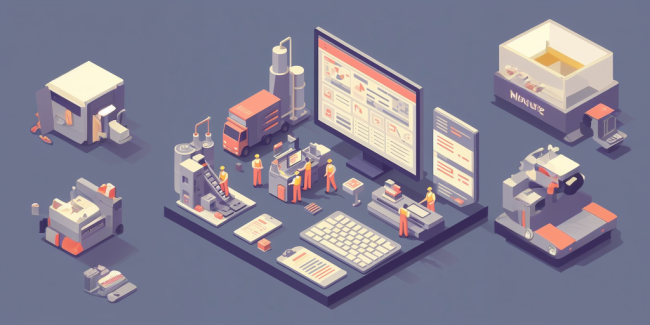Are you tired of the constant back-and-forth emails, missed deadlines, and confusing instructions when it comes to work orders? We hear you! In an increasingly interconnected world, it's time to simplify and streamline your work order platform. By adopting a more efficient approach, you can improve communication, minimize errors, and increase productivity.
So, how exactly can you achieve this? Let's dive in and discover the game-changing strategies that will revolutionize the way you handle work orders.
What are Work Order Platforms?
Work order platforms allow teams to efficiently coordinate tasks and track progress without getting overwhelmed with complex processes. The workflows powering the platform provide a clear structure for assigning, executing, and reviewing work orders.
For example, team members can easily communicate and share updates through a centralized platform, ensuring everyone is on the same page. Learn more about Work Order Management Systems.
Benefits of Work Order Platforms
Collaboration in work order workflows brings numerous benefits to businesses.
Firstly, it enhances communication among team members, allowing them to easily share information, updates, and feedback on specific tasks and if they have been prioritized. This improves overall efficiency and avoids bottlenecks in the workflow.
Secondly, it promotes transparency and accountability as everyone involved can track the progress of work orders, identify potential issues, and address them promptly. Moreover, work order collaboration streamlines decision-making processes by creating a platform for real-time discussions and problem-solving. By leveraging the power of collaboration, businesses can optimize their work order management, resulting in improved productivity and customer satisfaction.
Key Features of a Work Order Platform
When it comes to a work order platform, certain key features can significantly enhance productivity and efficiency.
For example, real-time communication tools allow team members to quickly exchange information and resolve issues without delay.
Additionally, clear task assignment and tracking features ensure that everyone stays on the same page and knows their responsibilities. A centralized platform that integrates with other tools can streamline the entire workflow by allowing seamless data transfer and eliminating the need for manual data entry. These practical features can greatly simplify work order collaboration and help teams achieve their goals more effectively.
Best Practices for Implementing a Work Order Platform
One effective approach to implementing a work order platform is by streamlining communication channels. By utilizing a centralized platform or software, team members can easily collaborate and share information without the need for multiple email exchanges or messy paper trails.
For example, a digital work order system allows technicians to receive real-time updates on job progress, enabling them to plan their schedules efficiently.
Additionally, a simple user interface makes it easy for both office staff and field workers to access and update work orders on the go. This streamlined process minimizes confusion and improves overall productivity.
Final thoughts
Looking to streamline your work order process? Implementing a work order platform, along with a Process Integration Solution, can significantly enhance efficiency. By breaking down tasks and assigning them to the right individuals, you can avoid delays and confusion. This workflow fosters better communication between team members and ensures everyone is on the same page. It also allows for easy tracking and monitoring of progress.
With work order collaboration, you can simplify and speed up your operations, leading to increased productivity and customer satisfaction. So why not give it a try and see the positive impact it can have on your business?
